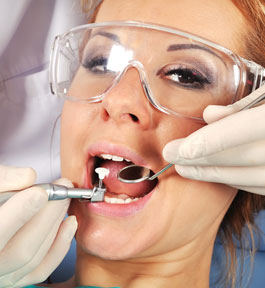Halloween is such a special time for children- they get to dress up, haunt the evening hours, and enjoy sweet treats from friends and neighbours. Yet it is a perilous time for their teeth: sugary treats can haunt the tooth enamel, causing problems down the road if not handled with care.
When we eat sugary foods, especially those that are sticky like gummy candy or caramel, three factors leave us open to demineralization (the first stage of a cavity): sugar, time, and bacteria. The sugar from the candy sits on the teeth and gets into the cracks and crevices of the tooth enamel. If it’s not brushed out straight away, the sugars can turn to bacteria and work their way through the enamel and cause cavities.
Time is critical factor in avoiding a cavity: if a person eats three mini-chocolate bars in a short period and then brushes, the teeth have a chance to strengthen and effectively recover from any weakening caused by the sugar; however, if the same three chocolates are eaten over a longer period of time (for example, one per hour), the teeth don’t have the same chance to recover in between and are more susceptible to damage.
We can minimize potential damage by encouraging our children to choose fruit or healthier snacks, or by providing sugar-free candies or candy that dissolves quickly. And regardless of the treat, brushing and flossing afterward is extremely important.
Halloween is such a fun time, and if we can ensure we’re haunted by little lions and ghosts rather than cavities, we’re guaranteed to have much more fun!






